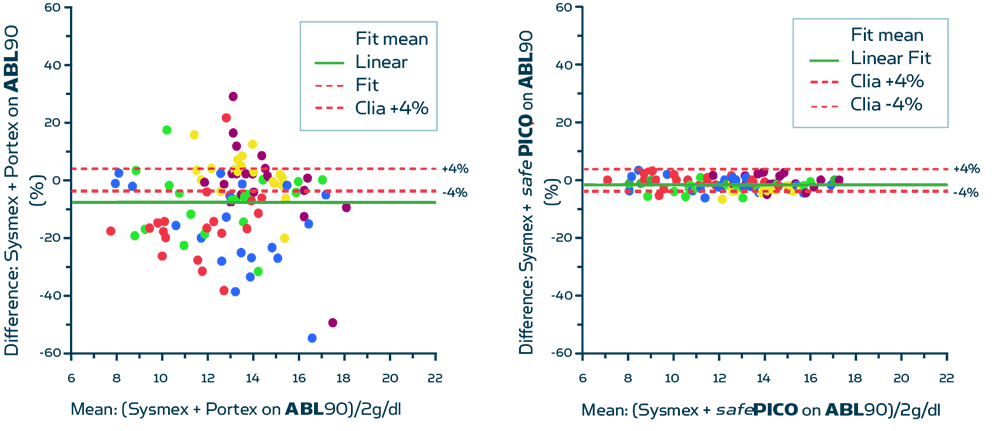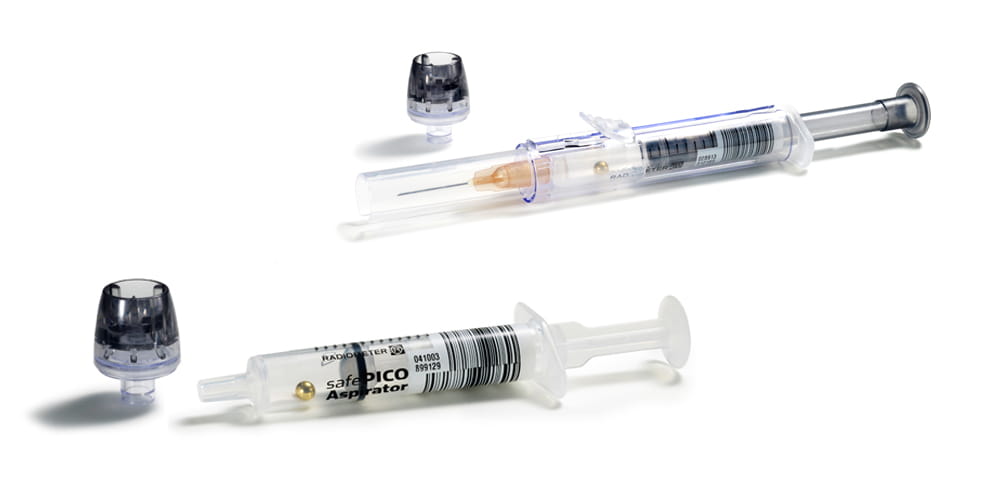Select your destination
Continue to Radiometer Medical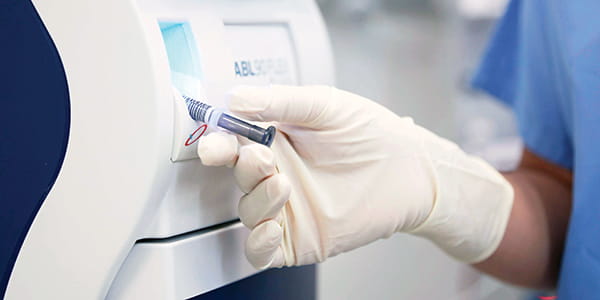
Achieve trusted tHb blood gas results with automatic mixing
Automatic mixing is a unique way of mixing blood gas samples prior to analysis that ensures a homogeneous sample, enabling more accurate hemoglobin results.
Automatic mixing functions exclusively with Radiometer analyzers featuring an inbuilt automatic safePICO mixer, in combination with safePICO syringes.
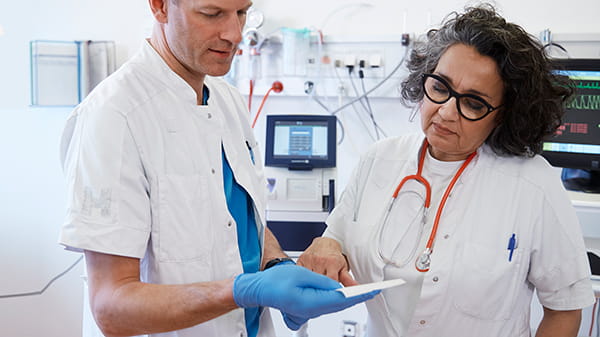

Reduce preanalytical errors with automatic mixing
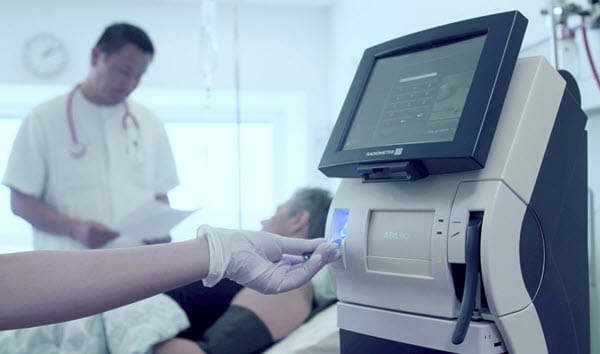
Optimize your blood gas workflow
Studies show that manual mixing may causes random bias. Automatic mixing may minimize unnecessary testing while ensuring homogeneous samples and enabling accurate hemoglobin results; a cornerstone of costly decisions around red blood cell transfusions (RBCT) [1] (see Figure 1).
Automatic mixing is efficient, with samples mixed in approximately eight seconds (ABL90 and ABL800). In comparison, current recommendations from the CLSI (Clinical Laboratory Standards Institute) for manual mixing, are to gently mix the sample for a minimum of one minute.
Figure 1. Bland-Altman plots. Bland-Altman plots of agreement in the measurement of hemoglobin given by the ABL90 FLEX for manual (A) versus automatic mixing (B) in reference to Sysmex. Hospital color coding: Adventist Bolingbrook, (Green); Adventist GlenOaks (Blue); Adventist Hinsdale (Bordeaux); Adventist LaGrange (Red); University of Minnesota (Yellow). The main difference (solid line) and the CLIA allowable total error acceptability limits for hemoglobin of 4% (dotted lines) are shown. [1]
Optimize your blood gas workflow
Studies show that manual mixing may causes random bias. Automatic mixing may minimize unnecessary testing while ensuring homogeneous samples and enabling accurate hemoglobin results; a cornerstone of costly decisions around red blood cell transfusions (RBCT) [1] (see Figure 1).
Automatic mixing is efficient, with samples mixed in approximately eight seconds (ABL90 and ABL800). In comparison, current recommendations from the CLSI (Clinical Laboratory Standards Institute) for manual mixing, are to gently mix the sample for a minimum of one minute.
Figure 1. Bland-Altman plots. Bland-Altman plots of agreement in the measurement of hemoglobin given by the ABL90 FLEX for manual (A) versus automatic mixing (B) in reference to Sysmex. Hospital color coding: Adventist Bolingbrook, (Green); Adventist GlenOaks (Blue); Adventist Hinsdale (Bordeaux); Adventist LaGrange (Red); University of Minnesota (Yellow). The main difference (solid line) and the CLIA allowable total error acceptability limits for hemoglobin of 4% (dotted lines) are shown. [1]
Explorer our products and solutions
Blood gas syringes and capillary tubes
Radiometer capillary tubes, aspirating and self-fill blood gas syringes are designed with various features that are intended to reduce the risk of preanalytical errors.
1st Automatic
Pre-barcoded syringes help ensure correct patient-sample identification every time when using with a Radiometer blood gas analyzer with 1st Automatic.
Blood gas testing
Radiometer offers a flexible blood gas diagnostic solution that can fit seamlessly into your acute care testing and hospital workflow.
Related knowledge sources
![]()
Preanalytical blood gas errors
This handbook focuses on the preanalytical phase of blood gas testing and what you can do to minimize errors.
![]()
Patient blood management
Patient Blood Management is an evidence-based approach to optimizing the care of patients’ blood. This includes opportunities to minimize blood loss and avoid the inappropriate use of blood.

How-to videos - guide to blood gas
Watch six educational videos to support you in understanding blood gas analysis.
Cookies are used on this website
Use of cookiesPlease enter a valid email
We will be sending an e-mail invitation to you shortly to sign in using Microsoft Azure AD.
It seems that your e-mail is not registered with us
Please click "Get started" in the e-mail to complete the registration process
Radiometer is using Microsoft AZURE Active Directory to authenticate users
Radiometer uses Azure AD to provide our customers and partners secure access to documents, resources, and other services on our customer portal.
If your organization is already using Azure AD you can use the same credentials to access Radiometer's customer portal.
Key benefits
- Allow the use of existing Active Directory credentials
- Single-sign on experience
- Use same credentials to access future services
Request access
You will receive an invitation to access our services via e-mail when your request has been approved.
When you accept the invitation, and your organization is already using AZURE AD, you can use the same credentials to access Radiometer's customer portal. Otherwise, a one-time password will be sent via e-mail to sign in.

